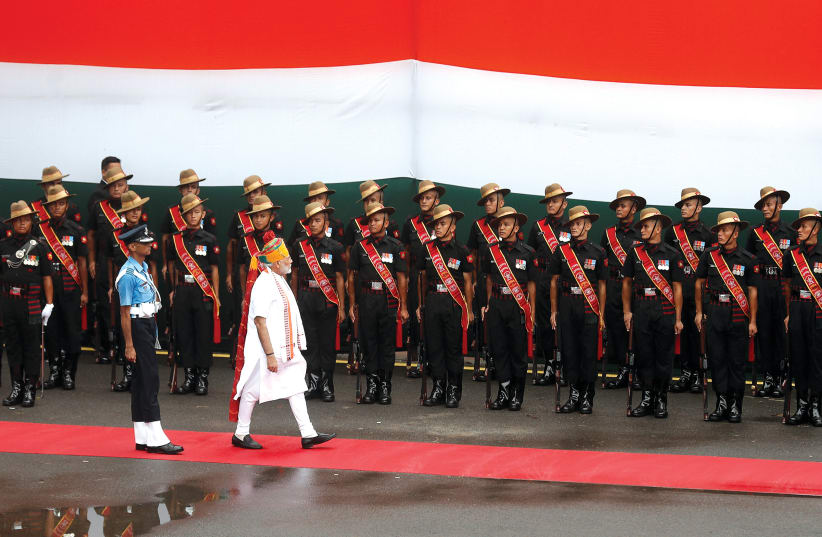Kashmir has always been strictly an issue between India and Pakistan. Any foreign diplomats worth their salt know about the 1972 Simla Agreement, which clearly outlined that any issue to do with Kashmir would be resolved between the two parties involved: India and Pakistan. Any third party involvement would not be welcome or legitimate.
During his meeting with Pakistani Prime Minister Imran Khan, Trump offered to “mediate” between India and Pakistan. Diplomats and political scientists around the world were immediately triggered, as it is well-known what the redlines are regarding Kashmir. Trump does not have legal authority to offer any third-party mediation, and any such mediation would not bear fruit nor would it be deemed legitimate. So Trump’s offer of mediation was ill-placed. However, what Trump could do is pressure Pakistan to stop its export of terrorism into India and to stop using terrorism as a diplomatic tool.
During the same meeting, Khan admitted that there are currently 45,000 terrorists operating in Pakistan. We can only imagine how many have not been disclosed. The US gives billions in aid every year to Pakistan for development, which sadly gets diverted to both their terror factories as well as their nuclear proliferation program. For 72 years, Pakistan has instigated and lost four wars with India and conducted many terrorist attacks, including an attack on the Indian Parliament, cementing its position as the largest state terror entity in the world.
Modi has made it very clear that the issue of Kashmir will be resolved between the two countries. In fact, Kashmir is truly an “internal matter” for India, and the illegally occupied area known as POK, “Pakistan-Occupied Kashmir,” is really the only issue up for bilateral resolution.
THE STATE of Kashmir legally and legitimately joined the union of India during the partition of 1947, and has been an integral part of the country since then. On August 5, 2019, Article 370 was revoked by the Indian government. Article 370 gave “special status” to Kashmir, allowing it to have its own flag, anthem and constitution. It was meant to be temporary and transient, and to be removed at a suitable future time. It sadly disconnected Kashmir from the rest of India, which for 70 years was treated as an isolated state.
With the removal of the Article 370, Kashmir fully integrates into India. This revokes the status of Kashmir as an apartheid state, where non-Muslims were treated as second-class citizens and refugees in their own home state. It also removed the sexist and racist property and inheritance laws that existed for 72 years, which did not allow non-Kashmiris and non-Muslims to inherit or buy property in the state of Kashmir.
The issue of illegal occupation in the subcontinent does not stop with Pakistan. The Indian region called Aksai Chin was also illegally occupied by Pakistan and then gifted to China, which now holds ownership of it. India will deal with getting part of this region back from China, but the countries are on good terms and they can work out something without escalating any further. Indian External Affairs Minister Subrahmanyam Jaishankar recently noted, “India’s relationship with China is one of the future. But Pakistan is an unusual neighbor and a peculiar problem. It is the only country in the world that uses terrorism as a diplomatic tool.”
Trump made a noticeable U-turn on his original offer of mediation and has since agreed that Kashmir is in good hands and will be resolved by these two parties.
The handshake and Modi’s cheeky back slap to Trump was assertive, confident and indicative of the strong diplomatic ties between India and the US. It also validates the international community’s stance with India in its internal matters over Kashmir, isolating Pakistan just like the UN did a week ago. In a sense, Modi is saying: “Back off, we got this”!
The writer is a political editor and commentator based in Los Angeles, specializing in geopolitical strategies, international affairs, conflict resolution and religion.
